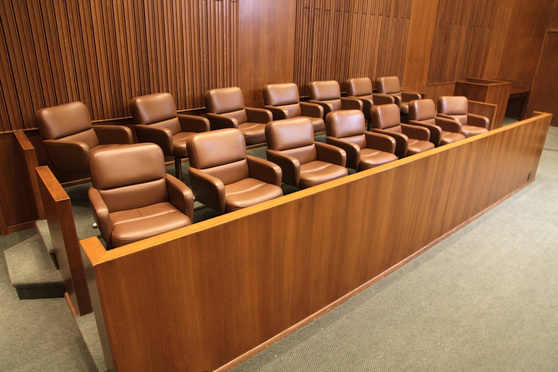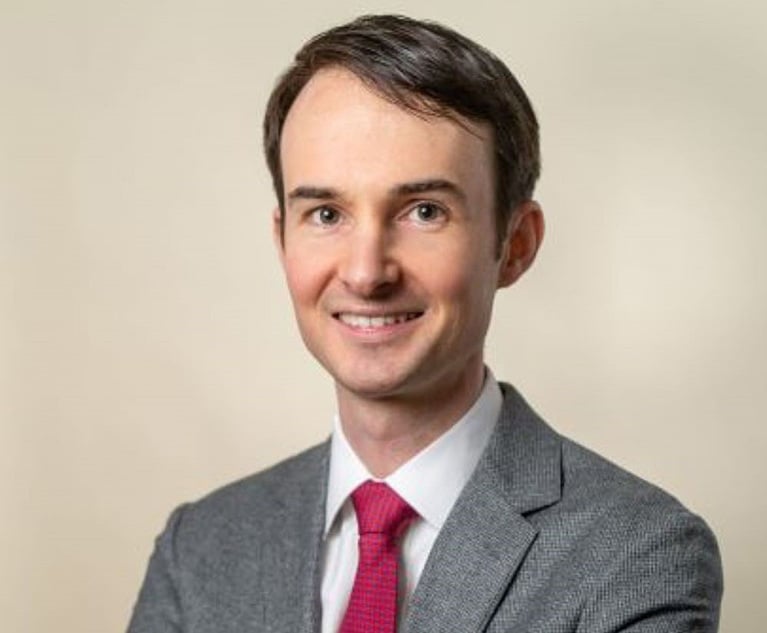Pa. Superior Court Adds to Debate Over Jury Instructions in Wake of 'Tincher'
Like its predecessor, the state Supreme Court's 2014 pronouncement that recalibrated products liability law in Pennsylvania, the latest ruling in Tincher v. Omega Flex has led to a variety of interpretations, but one thing appears certain—the defense bar is encouraged by the opinion's discussion of jury instructions.
March 01, 2018 at 03:57 PM
7 minute read
 Photo by Jason Doiy
Photo by Jason Doiy Like its predecessor, the state Supreme Court's 2014 pronouncement that recalibrated products liability law in Pennsylvania, the latest ruling in Tincher v. Omega Flex has led to a variety of interpretations, but one thing appears certain—the defense bar is encouraged by the opinion's discussion of jury instructions.
In mid-February a three-judge panel of the state Superior Court determined that the product manufacturer defendant in the case was entitled to a new trial on claims that its gas transportation system was defective. The decision, which marks Tincher's second time up the appellate ladder, reversed the trial court's ruling and highlighted the importance of jury instructions regarding the revamped definition of “defect.”
Members of the defense bar were quick to claim the ruling as a victory in an ongoing debate about how juries should be instructed to consider products liability issues in the wake of the Supreme Court's 2014 decision in Tincher.
Specifically, defense attorneys have pointed to the panel's holding that the jury instruction that had been given in the case previously had been “a paradigm example of fundamental error,” and said the ruling clearly goes against language in suggested jury instructions that the defense bar has taken issue with.
For more than 18 months, the defense bar has argued that suggested standard jury instructions issued by the Pennsylvania Bar Institute retained language from the 1978 decision in Azzarello v. Black Brothers—a case that most attorneys agree was overruled by Tincher. In particular, the defendants took issue with language telling jurors that “at the time the product left [the defendant]'s control, it lacked any element necessary to make it safe.”
The Pennsylvania Defense Institute even issued its own set of suggested jury instructions last year.
According to Reed Smith attorney James Beck, a defense attorney focused on products liability, the Superior Court's Feb. 16 ruling in Tincher makes it clear that language should no longer be used for charging juries.
“We always thought it was simply wrong anyways, but now we have a published opinion, so that's statewide binding precedent,” Beck said.
Defense attorney Daniel Cummins of Foley, Comerford & Cummins also said on his blog “Tort Talk” that the Superior Court's decision clearly disapproves of any jury instruction based on Azzarello.
“Accordingly, it appears that the Pennsylvania Standard Suggested Jury Instruction issued after the Supreme Court's decision in Tincher purporting to restore the Azzarello formulation may be inconsistent with the new standards set down in Tincher,” he said.
Some plaintiffs attorneys agreed that the suggested jury instructions may need to be revisited in light of that decision, but most dismissed the language as a relatively insignificant part of the jury charges, and at least one attorney disagreed with the notion that Tincher overruled the foundational prior case law.
According to Cliff Rieders, of Rieders, Travis, Humphrey, Waters & Dohrmann, the Supreme Court's 2014 Tincher decision said only that juries, and not judges, need to determine what a defect is, and the case did not say Azzarello is no longer good law. He said he did not think the latest Tincher decision should have a major impact on how juries should be charged.
“I'm sure the panel would be shocked to hear there's anything remarkable about what they did,” Rieders said. “Nothing in Tincher I or Tincher II would support that tortured view.”
Rieders is a member of the civil instructions subcommittee of the Pennsylvania Supreme Court Committee for Proposed Standard Jury Instructions, which developed the suggested jury instructions eventually published by the PBI. Rieders said he could not speak on behalf of the committee, which has not met since Tincher II.
Richard Jurewicz of Galfand Berger said he was also not surprised by Tincher II, but he said it seemed clear from Tincher I that the justices were “uncomfortable” with the Azzarello language.
Jurewicz said he has pushed to have jurors charged with similar language in the products liability cases he has handled since Tincher I. However, the language, he said, has been “automatically red-flagged” as coming from Azzarello, and so judges have been reluctant to use it.
He said if Tincher II shows anything, it is that jury charges should be pared down and simplified, and any extraneous discussion about social policies or duties should be cut.
“As I read this Superior Court Tincher opinion, they're saying, we need to keep it simple. You included Azzarello, which is not the law,” Jurewicz said. “Courts really want to stay away from amorphous, esoteric charges. It's not clear to anyone sitting on the jury, let alone the jurists, what the special responsibilities are of a manufacturer.”
According to attorneys, there have been a few cases where a plaintiff has sought to use the PBI's suggested instructions, while the defendant pushed to use the PDI's proposed language. One such case was tried in Philadelphia and resulted in a $650,000 verdict after the judge declined to give several PBI instructions. In another case that was tried in Lehigh County, a jury was charged using language from the PBI's instructions.
Anapol Weiss attorney Larry Coben handled the Lehigh County case, which was Davis v. Volkswagen. He said the Superior Court's latest decision in Tincher might foreclose juries from being charged with some of the PBI's suggested instructions. However, he said the passages were more introductory than anything else, and could be substituted with other passages from the PBI's suggested instructions.
According to Coben, there may be other issues with the PBI's suggested instructions, especially the decision to include language in the definition of “defect” that says a product's defective condition was a “factual cause” of the plaintiff's harm.
That language, he said, is at the heart of an ongoing appeal in the Lehigh County case. The jury in Davis ultimately determined that the vehicle was defective on one question, but, on a subsequent question, it determined that the defect was not a factual cause. Those findings, Coben said, are inconsistent given that the charges' definition of defect includes “factual cause.”
Coben said there will likely be a lot of arguing on jury instructions, but he said the most significant issue that will need to be developed in the wake of Tincher deals with what evidence should be allowed to come into trials—evidence like industry standards.
“Now that you have a different definition, does that change what is admissible, or not admissible to prove something is defective?” he said. “That's going to be a big, big change over the next five years.”
Kline & Specter attorney Charles “Chip” Becker was dismissive of the notion that there is a dichotomy between the PBI and PDI's jury instructions, since the PBI has been tasked with developing a set of instructions that can be used by all sides.
“I would expect the Supreme Court's committee to consider this opinion as part of its ongoing review and evaluation of Pennsylvania's Civil Jury Instructions,” Becker said. “That committee is formulating instructions that are helpful to judges and juries. That work must be undertaken deliberately and with great care.”
One way that courts have found to bypass the issue altogether is to have the parties stipulate to the jury charges, which means the lawyers must hash out the discrepancies among themselves.
Jurewicz said that's exactly what happened in a case he tried after Tincher I.
“It wound up being pretty basic language,” Jurewicz said. “The judge outsmarted both of us.”
This content has been archived. It is available through our partners, LexisNexis® and Bloomberg Law.
To view this content, please continue to their sites.
Not a Lexis Subscriber?
Subscribe Now
Not a Bloomberg Law Subscriber?
Subscribe Now
NOT FOR REPRINT
© 2025 ALM Global, LLC, All Rights Reserved. Request academic re-use from www.copyright.com. All other uses, submit a request to [email protected]. For more information visit Asset & Logo Licensing.
You Might Like
View All
No Pa. Case Has Ever Adjudicated a Claim to Enforce an Environmental Covenant Imposed Under 'Act 2'—Does That Matter?
7 minute read
Superior Court Rejects Pa. Hospital's Challenge to $7.3M Med Mal Judgment
3 minute read
Pittsburgh Judge Rules Loan Company's Online Arbitration Agreement Unenforceable
3 minute read
De-Mystifying the Ethics of the Attorney Transition Process, Part 1
Trending Stories
- 1Many LA County Law Firms Remain Open, Mobilize to Support Affected Employees Amid Historic Firestorm
- 2Stevens & Lee Names New Delaware Shareholder
- 3U.S. Supreme Court Denies Trump Effort to Halt Sentencing
- 4From CLO to President: Kevin Boon Takes the Helm at Mysten Labs
- 5How Law Schools Fared on California's July 2024 Bar Exam
Who Got The Work
Michael G. Bongiorno, Andrew Scott Dulberg and Elizabeth E. Driscoll from Wilmer Cutler Pickering Hale and Dorr have stepped in to represent Symbotic Inc., an A.I.-enabled technology platform that focuses on increasing supply chain efficiency, and other defendants in a pending shareholder derivative lawsuit. The case, filed Oct. 2 in Massachusetts District Court by the Brown Law Firm on behalf of Stephen Austen, accuses certain officers and directors of misleading investors in regard to Symbotic's potential for margin growth by failing to disclose that the company was not equipped to timely deploy its systems or manage expenses through project delays. The case, assigned to U.S. District Judge Nathaniel M. Gorton, is 1:24-cv-12522, Austen v. Cohen et al.
Who Got The Work
Edmund Polubinski and Marie Killmond of Davis Polk & Wardwell have entered appearances for data platform software development company MongoDB and other defendants in a pending shareholder derivative lawsuit. The action, filed Oct. 7 in New York Southern District Court by the Brown Law Firm, accuses the company's directors and/or officers of falsely expressing confidence in the company’s restructuring of its sales incentive plan and downplaying the severity of decreases in its upfront commitments. The case is 1:24-cv-07594, Roy v. Ittycheria et al.
Who Got The Work
Amy O. Bruchs and Kurt F. Ellison of Michael Best & Friedrich have entered appearances for Epic Systems Corp. in a pending employment discrimination lawsuit. The suit was filed Sept. 7 in Wisconsin Western District Court by Levine Eisberner LLC and Siri & Glimstad on behalf of a project manager who claims that he was wrongfully terminated after applying for a religious exemption to the defendant's COVID-19 vaccine mandate. The case, assigned to U.S. Magistrate Judge Anita Marie Boor, is 3:24-cv-00630, Secker, Nathan v. Epic Systems Corporation.
Who Got The Work
David X. Sullivan, Thomas J. Finn and Gregory A. Hall from McCarter & English have entered appearances for Sunrun Installation Services in a pending civil rights lawsuit. The complaint was filed Sept. 4 in Connecticut District Court by attorney Robert M. Berke on behalf of former employee George Edward Steins, who was arrested and charged with employing an unregistered home improvement salesperson. The complaint alleges that had Sunrun informed the Connecticut Department of Consumer Protection that the plaintiff's employment had ended in 2017 and that he no longer held Sunrun's home improvement contractor license, he would not have been hit with charges, which were dismissed in May 2024. The case, assigned to U.S. District Judge Jeffrey A. Meyer, is 3:24-cv-01423, Steins v. Sunrun, Inc. et al.
Who Got The Work
Greenberg Traurig shareholder Joshua L. Raskin has entered an appearance for boohoo.com UK Ltd. in a pending patent infringement lawsuit. The suit, filed Sept. 3 in Texas Eastern District Court by Rozier Hardt McDonough on behalf of Alto Dynamics, asserts five patents related to an online shopping platform. The case, assigned to U.S. District Judge Rodney Gilstrap, is 2:24-cv-00719, Alto Dynamics, LLC v. boohoo.com UK Limited.
Featured Firms
Law Offices of Gary Martin Hays & Associates, P.C.
(470) 294-1674
Law Offices of Mark E. Salomone
(857) 444-6468
Smith & Hassler
(713) 739-1250





